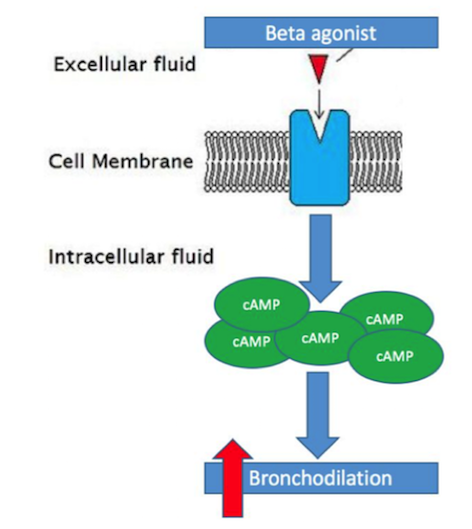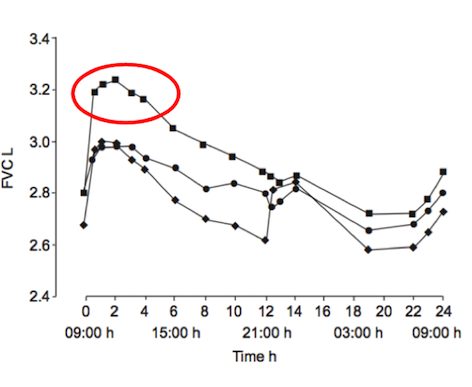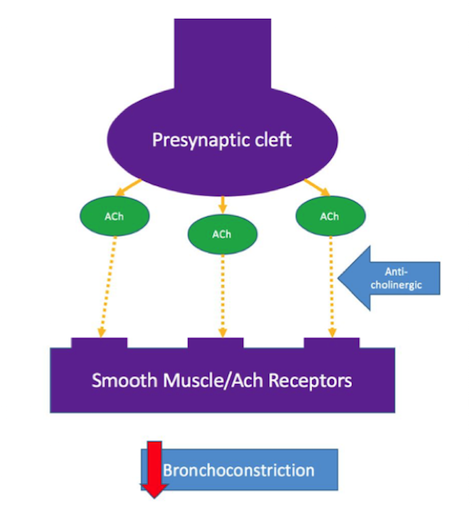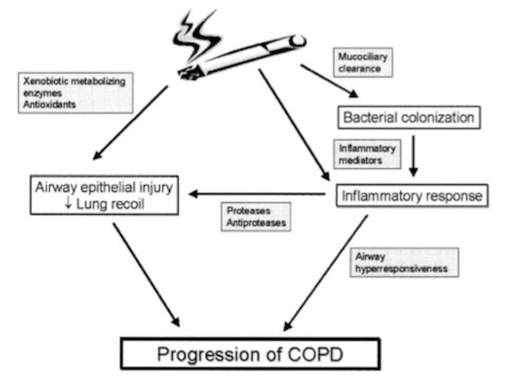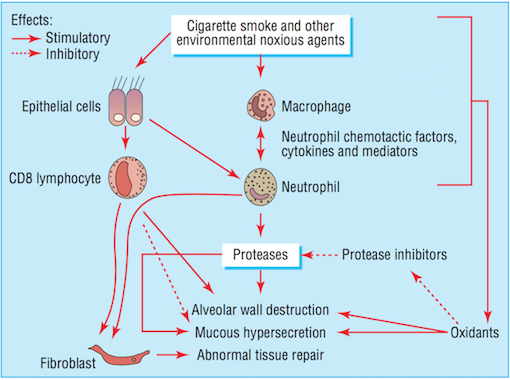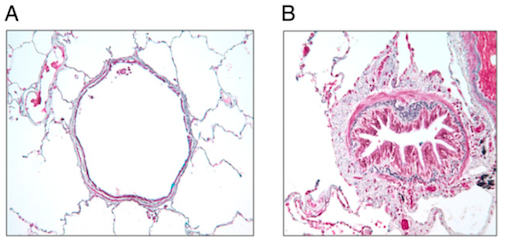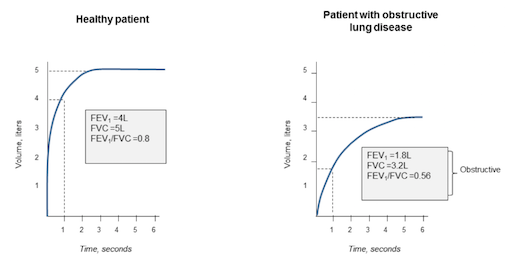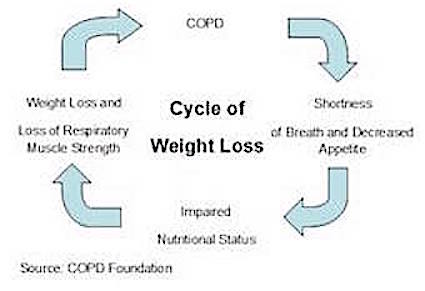This is an old revision of the document!
Table of Contents
Crohn's Disease (CD)
Introduction
What is CD
Crohn disease is an idiopathic, chronic inflammatory process of the gastrointestinal (GI) tract which affects any parts of the tract ranging from the mouth to the anus. It is believed to be the result of an imbalance between pro-inflammatory and anti-inflammatory mediators. Some factors which encourages this imbalance are genetic susceptibility and environmental triggers. Hence, there is no real single factor that induces this intestinal inflammation.
Signs and symptoms include abdominal pain, diarrhea, fever, and weight loss. Usually, these symptoms induce complications by intestinal fistulization and obstruction. Additionally, individuals diagnosed with this risk are at a greater risk of developing bowel cancer. http://www.nhlbi.nih.gov/health/health-topics/topics/copd>
Epidemiology
According to a National Survey analysis that was done on a geographically diverse health insurance claims database, it estimated that the prevalence of Crohn disease among US children and adults between 2003-2004 to be 201 cases per 100,000 persons among adults and 43 per 100,000 among children.
Urban areas are estimated to have a higher prevalence of IBD than rural areas do. Moreover, upper socioeconomic classes are predicted to have a higher prevalence than lower socioeconomic classes due to the difference in the access to health care between the two groups.
In general, the frequency of this disease is similar in males and females, with some studies that shows a very slight female predominance. The rate of Crohn disease is deemed to be 1.1 – 1.8 times higher in women than in men. Moreover, Crohn disease is reported to be more common in white patients than black patients, and very rare in Asian and Hispanic individuals. On average, approximately 20% of all Crohn disease patients are of black descent.
Pathophysiology
The pathophysiology of Crohn’s disease stems from a chronic inflammation from T-cell activation leading to tissue injury in the gastrointestinal tract. After the antigen activates an immune response, type 1 T-helper (Th1) cells predominate and stimulate an inflammatory response with other Th1 cytokines. Th1 cytokines include interleukin (IL)-12 and TNF-alpha that stimulate this inflammatory response. Inflammatory cells recruited by these cytokines release metabolites, proteases, and free radicals that all result in direct injury to the intestine.
According to a study conducted in 2012, researchers suggest that genetic factors for Crohns Disease leads to an abnormal observation in epithelial barrier integrity, deficits in autophagy, deficiencies in innate pattern recognition receptors, and problems with lymphocyte differentiation (Ghazi, 2016).
On a microscopic level, the initial lesion starts from an ulceration of the superficial mucosa. The inflammatory cells such as granulomas then invade the deep mucosal layers and start extending through all layers of the intestinal walls and into the regional lymph nodes. Although granuloma formation is the primary pathophysiologic factor of Crohn disease, its absence does not exclude the diagnosis.
Risk Factors
Family History
Studies have shown that there is a genetic factor involved in developing Crohn’s Disease. These studies propose that siblings are at a 30 Xs greater risk than the general population for developing CD (Probert et al., 1993). They are not entirely sure what the model of inheritance this genetic predisposition follows, but it does not seem to be a simple Mendelian pattern. Research shows that the condition is due to a recessive gene with incomplete penetrance. This genetic factor then combines with an environmental factor to determine their disease susceptibility. So the people at greatest risk are those that have the genetic predisposition and are exposed to some environmental factor.
Measles Virus Measles virus infection can disrupt immune function, mainly in helper T-cell response. Many studies show the role measles virus plays in the aetiology of inflammatory bowel diseases, like Crohn’s disease. A technique called immunogold electron microscopy has confirmed the persistence of measles in Crohn’s disease affected bowel. There is a positive relationship between perinatal exposure to measles and the development of CD (Thompson., Pounder., Wakefield., & Montgomery, 1995).
Breastfeeding Measles virus infection can disrupt immune function, mainly in helper T-cell response. Many studies show the role measles virus plays in the aetiology of inflammatory bowel diseases, like Crohn’s disease. A technique called immunogold electron microscopy has confirmed the persistence of measles in Crohn’s disease affected bowel. There is a positive relationship between perinatal exposure to measles and the development of CD (Thompson., Pounder., Wakefield., & Montgomery, 1995).
Exacerbating Factors
Intercurrent infections
Intercurrent infections (both upper respiratory tract and enteric infections) have been seen to exacerbate Crohn’s disease. Many studies have examined the interaction between infections and CD and have shown that infections can initiate the onset and relapse of inflammatory bowel diseases (including CD). The disease also puts patients at a higher risk of infection and the medications to treat CD and further increase the risk. The lack or poor response to vaccinations can also play a role in infections (Irving, & Gibson, 2008).
Cigarette Smoking
Smoking cessation has a beneficial effect to patients with Crohn’s disease. Studies have shown patients with Crohn’s disease who stopped smoking for more than 1 year had a more benign disease course than if they had never smoked. Considering the rate of flare-up and therapeutic needs, disease severity was similar in patients who had never smoked and those who stopped smoking, and both had a better course than patients who continued smoking (Cosnes., Beaugerie., Carbonnel., & Gendre, 2001).
Stress Many patients and family members report stress being an influencing factor for the onset and progression of CD (Hanauer., & Sandborn, 2001). However, there have been not studies that support this relation. Researchers have not been able to link trauma events or a stressful life to the development of CD. More research must be done in this area of study to form more conclusive evidence.
Medications
What is Prednisone? Prednisone is a corticosteroid that acts as a glucocorticoid receptor agonist in order to treat inflammatory diseases, such as Crohn’s (Barnes, 1998). Inflammation of the digestive tract is a common symptom in Crohn’s disease patients due to the pathophysiology of this disease. In the past, corticosteroids like Prednisone have been used for their immunosuppressive and anti-inflammatory properties (Jobin & Sartor, 2000). They are able to decrease inflammation by inhibiting the actions of pro-inflammatory cytokines, thus decreasing recruitment of white blood cells, like monocytes and neutrophils, which cause inflammation (Auphan et al., 1995). Many studies have conclusively shown that pro-inflammatory cytokine, such as TNF- alpha and IFN-gamma, are responsible for the inflammation of the gastrointestinal tract that is present in Crohn’s disease patients (Wakefield et al., 1991). Typically, the anti-inflammatory response in the body is controlled by glucocorticoids. When their release is normally stimulated in the body, they will bind to intracellular, cytoplasmic glucocorticoid receptors (Farell & Kelleher, 2003). These receptors will dimerize upon binding and immediately be transported to the nucleus where the regulate the transcription of target genes through block transcription of the promote NF-kappa-B. As mentioned earlier, NF-kappa-B is a potent transcription factors that, when activated, will lead the production of pro-inflammatory cytokines like TNF-alpha (Beato, Herrlich & Schutz, 1995). Research into other inflammatory disorders, such as asthma and irritable bowel syndrome, have proven that these diseases are caused by glucocorticoid resistance, which leads to an un-regulated inflammatory response, caused by increased cytokines which increase recruitment of white blood cells (Barnes, 1998). Since inflammation is a primary part of the pathophysiology of Crohn’s disease, Prednisone can effectively manage these symptoms by binding to glucocorticoid receptors and promoting their activation. By doing do, Prednisone is able to inhibit inflammatory cytokine production and thus ultimately decrease white blood cell recruitment and inflammation (Barnes, 1998).
Effectiveness
In a study done by Wild et al. (2003), effectiveness of Prednisone in the treatment of Crohn’s disease pathophysiology was illustrated. By measuring intestinal permeability and TNF-alpha levels, they were able to determine that Prednisone was effective in reducing bowel inflammation in Crohn’s disease patients. Typically, in Crohn’s disease, increased intestinal permeability to sugars and macromolecules has been illustrated (Hollander et al., 1986). Intestinal permeability can be measured using urinary clearance of lactulose to mannitol (LM ratio). This is thought to be caused by the un-regulated inflammatory response in Crohn’s disease patients, which leads to decreases in epithelial barrier integrity and thus increased intestinal permeability (Wild et al., 2003). The anti-inflammatory properties of Prednisone were measured by muscle biopsies taken endoscopically (Scheinman et al., 1995). By comparing LM ratios and muscle samples to measure TNF-alpha levels, Wild et al. were able to observe the effects of Prednisone on Crohn’s disease pathophysiology. Results indicated that LM ratios were significantly reduced after treatment with prednisone. Prednisone was seen to reduce the LM ratio by approximately 50%, indicating it was able to induce remission; however, it was no proven to maintain remission after discontinuation of the drug (Wild et al., 2003). Additionally, TNF-alpha levels were measured by comparing levels of those who relapsed immediately and those who did not. In those that did not immediately relapse, there was a reduction in TNF-alpha levels, which is indicative of decreased inflammation (Wild et al., 2003). Overall, Prednisone was seen to aid in the induction of remission of Crohn’s disease patients, illustrated by reduced LM ratios (improved intestinal permeability) and TNF-alpha levels. However, once taken off the drug, Prednisone was not proven to be effective in maintaining remission, which is difficult because individuals cannot be on prednisone for too long due to side effects, which will be discussed in the next section.
Side Effects
Corticosteroids, like Prednisone, are very effective drugs to treat the inflammation that is typically seen in Crohn’s disease patients. However, these anti-inflammatory properties are caused by the suppression of the immune system, which has many side effects on the body (Malchow & Brandes, 1984). Pro-inflammatory cytokines, like TNF-alpha, promote vasodilation and increased white blood cell migration of injury suite within the body (Scheinman et al., 1995). Since Prednisone blocks the transcription of TNF-alpha within the body, it is able to decrease the inflammatory response within the bowels of Crohn’s disease patients that TNF-alpha causes, it also supresses the other effects of the drug. A typical side effects that patients on Prednisone may experience is high blood pressure, which is associated with water retention (1 Malchow & Brandes, 19847). Additionally, decreased cytokine production prevents white blood cell recruitment to sites of injury and infection within the body, thus leading to an increase susceptibility to infections while on Prednisone because of this immunosuppressive effect (Coutinho & Chapman, 2011). Overall, Prednisone is very effective in treating Crohn’s disease pathophysiology when patients take it, but prolonged use is discouraged due to the side effects that accompany this drug.
What is Prednisone?
Kirman, Whelan, & Nielsen (2004) identify infliximab (trade name Remicade) is an IgG monoclonal antibody drug that targets TNF-alpha, a tumor necrosis factor. It is effective in ⅔ of Crohn’s Disease patients. The antibody is developed from mice and then replaced with human antibody domains (Kirman, Whelan, & Nielsen, 2004). Not only does infliximab treat Crohn’s Disease, but it also treats ulcerative colitis, psoriasis, psoriatic arthritis, rheumatoid arthritis, psoriatic arthritis, ankylosing spondylitis, plaque psoriasis (Janssen Biotech, 2016). Having an excess of TNF-alpha can cause the immune system to attack healthy cells in the GI tract leading to inflammation, and symptoms of Crohn’s Disease (Janssen Biotech, 2016).
Mechanism of Action Infliximab is given by IV infusion 6 times a year after 3 starting doses given at 0,2, and 6 weeks (Janssen Biotech, 2016). This drug can only be administered by healthcare professionals, and can even be delivered with other medications to reduce or eliminate side effects (Janssen Biotech, 2016). Infliximab binds to TNF-alpha expressing cells, as seen in Figure 8 (replace with real figure name), and precents TNF-alpha from binding to its receptor. The results of this drug are apoptosis of T-lymphocytes and monocytes, and down regulation of other inflammatory cytokines such as Th1 (Kirman, Whelan, & Nielsen, 2004). Apoptosis of monocytes is initiated by the CD95/CD95L signaling pathway and mitochondrial release of cytochrome C (Lügering et al., 2001). Cytochrome C release triggers the transcriptional activation of Bax and Bak, pro apoptotic regulators (Van Deventer, 2001).
Effectiveness Infliximab is highly effective compared to other methods of treatments due to its high effectiveness and relatively low toxicity. When compared to another method of treatment, azathioprine, a purine analog working as an immunosuppressant, it has significantly better results (Colombel et al., 2010). Infliximab, seen in green on Figure 9 (replace with right number), is not more effective than a combined therapy, seen in blue. However, the combined therapy is much more toxic than the infliximab alone, therefore negates its effectiveness (Colombel et al., 2010). Furthermore, the increase in effectiveness of combined therapy is most likely due to the additive effect of using both drugs (Colombel et al., 2010).
Side Effects
There is a higher risk of infection with mycobacteria, and thus increase risk of contracting tuberculosis (Antoni & Braun, 2002). This higher risk of infection is due to the patient's immunocompromised state when taking the drug, and to avoid serious illness patients need to be informed of their immunocompromised state and educated on necessary precautions by doctors before taking infliximab (Antoni & Braun, 2002). If patients take the signs of infection seriously and report it to their doctors they will receive antibiotics right away and chances of serious infection will be drastically reduced. When patients are traveling anywhere with high rates of tuberculosis they should not receive the treatment at all, however in the USA less than 1% of the population has tuberculosis. This treatment is not administered if the patient is planning on visiting countries with higher incidence of tuberculosis because it could result in them contracting the disease (Antoni & Braun, 2002). Infliximab use has also been loosely correlated with an increased incidence of lymphoma (Antoni & Braun, 2002). There is a rare chance of acute and delayed hypersensitivity reactions dye to development of human chimeric antibodies, but this is only in 10% of patients, with only 2.6% of patients discontinuing treatment due to serious infusion reactions. (Kirman, Whelan, & Nielsen, 2004). Infusion reactions symptoms are headache, dizziness and nausea (Antoni & Braun, 2002).
A positive side effect of Infliximab is that in reducing the TNF-alpha concentrations in the body, patients can see a reduction in the symptoms of other diseases. Things that have improved are rheumatoid arthritis, psoriasis, and ankylosing spondylitis (Van Deventer, 2001).
Current Research
Conclusion
References
1. Barnes, P. J. (1995). Bronchodilators: basic pharmacology. In Chronic obstructive pulmonary disease (pp. 391-417). Springer US.
2. Bauer, J., Biolo, G., Cederholm, T., Cesari, M., Cruz-Jentoft, A. J., Morley, J. E., … & Visvanathan, R. (2013). Evidence-based recommendations for optimal dietary protein intake in older people: a position paper from the PROT-AGE Study Group. Journal of the American Medical Directors Association, 14(8), 542-559.
3. Berge, M. V., Hacken, N. H., Cohen, J., Douma, W. R., & Postma, D. S. (2011). Small Airway Disease in Asthma and COPD. Chest, 139(2), 412-423. doi:10.1378/chest.10-1210
4. Bourdin, A., Burgel, P., Chanez, P., Garcia, G., Perez, T., & Roche, N. (2009, September 5). Recent advances in COPD: Pathophysiology, respiratory physiology and clinical aspects, including comorbidities. European Respiratory Review, 18(114), 198-212. Doi: 10.1183/09059180.00005509.
5. Brug, J., Schols, A., & Mesters, I. (2004). Dietary change, nutrition education and chronic obstructive pulmonary disease. Patient education and counseling, 52(3), 249-257.
6. Cambach, W., Wagenaar, R. C., Koelman, T. W., van Keimpema, T., & Kemper, H. C. (1999). The long-term effects of pulmonary rehabilitation in patients with asthma and chronic obstructive pulmonary disease: a research synthesis. Archives of physical medicine and rehabilitation, 80(1), 103-111.
7. Castaldi, P., et al. (2010). The COPD genetic association compendium: a comprehensive online database of COPD genetic associations. Human Molecular Genetis. 19 (3), 526-534. Doi:10.1093/hmg/ddp519
8. Chung, K. F. (2005, June 22). The Role of Airway Smooth Muscle in the Pathogenesis of Airway Wall Remodeling in Chronic Obstructive Pulmonary Disease. Proceedings of the American Thoracic Society, 2(4), 347-354. doi:10.1513/pats.200504-028sr.
9. DeMeo, D., et al. (2009). Integration of genomic and genetic approaches implicates IREB2 as a COPD susceptibility gene. American journal of human genetics. 85 (4), 493-502. Doi:10.1016/j.ajhg.2009.09.004
10. Goldstein, R. S., Gort, E. H., Avendano, M. A., Stubbing, D., & Guyatt, G. H. (1994). Randomised controlled trial of respiratory rehabilitation. The Lancet,344(8934), 1394-1397.
11. Hancock, D., et al. (2010). Meta-analyses of genome-wide association studies identify multiple loci associated with pulmonary function. Nature genetics. 42 (1), 45-52. Doi:10.1038/ng.500
12. Hautamaki, R., et al. (1997). Requirement for macrophage elastase for cigarette smoke-induced emphysema in mice. Science (New York, N.Y.). 277 (5334), 2002-4. Doi:10.1126/science.277.5334.2002
13. Joos, J., Pare, P., Sandford, A. (2002). Genetic risk factors for chronic obstructive pulmonary disease. Wolters Kluwer Health. 8 (2), 87-97. Doi: 2002/03/smw-09752
14. Ko, F. & Hui, D. (2012). Air pollution and chronic obstructive pulmonary disease. Respirology. 17 (3), 395-401. Doi: 10.1111/j.1440-1843.2011.02112.x
15. MacNee, W. (2006, May 20). ABC of chronic obstructive pulmonary disease: Pathology, pathogenesis, and pathophysiology. Bmj, 332(7551), 1202-1204. doi:10.1136/bmj.332.7551.1202.
16. Matheson, M., et al. (2005). Biological dust exposure in the workplace is a risk factor for chronic obstructive pulmonary disease. Thorax. 60 (8), 645-51. Doi: 10.1136/thx.2004.035170
17. Paknikar S. (2013). Increased Airway Resistance in COPD Occurs Due to Loss or Narrowing of Small Airways. http://www.medindia.net/news/healthinfocus/increased-airway-resistance-in-copd-occurs-due-to-loss-or-narrowing-of-small-airways-92858-1.htm
18. Pendas, A., et al. (1996). Fine physical mapping of the human matrix metalloproteinase genes clustered on chromosome 11q22.3. Genomics. 37 (2), 266-8. Doi: 10.1006/geno.1996.0557
19. Pillai, S., et al. (2009). A genome-wide association study in chronic obstructive pulmonary disease (COPD): identification of two major susceptibility loci. PLoS genetics. 5 (3). Doi: 10.1371/journal.pgen.1000421
20. Ries, A. L., & Squier, H. C. (1996). The team concept in pulmonary rehabilitation. Lung Biology in Health and Disease, 91, 55-66.
21. Ries, A. L., Bauldoff, G. S., Carlin, B. W., Casaburi, R., Emery, C. F., Mahler, D. A., … & Herrerias, C. (2007). Pulmonary rehabilitation: joint ACCP/AACVPR evidence-based clinical practice guidelines. CHEST Journal,131(5_suppl), 4S-42S.
22. Rossi, A., Khirani, S., & Cazzola, M. (2008). Long-acting β2-agonists (LABA) in chronic obstructive pulmonary disease: efficacy and safety. International Journal of Chronic Obstructive Pulmonary Disease, 3(4), 521–529.
23. Schols, A. M., Slangen, J. O. S., Volovics, L., & Wouters, E. F. (1998). Weight loss is a reversible factor in the prognosis of chronic obstructive pulmonary disease. American journal of respiratory and critical care medicine, 157(6), 1791-1797.
24. Shim, C. (1989). Response to bronchodilators. Clinics in chest medicine, 10(2), 155-164.
25. Smith, C. & Harrison, D. (1997). Association between polymorphism in gene for microsomal epoxide hydrolase and susceptibility to emphysema. The Lancet. 350 (9078), 630-633. Doi: 10.1016/S0140-6736(96)08061-0
26. Takeda (2012). Pathophysiology of COPD. http://www.thinkcopdifferently.com/About%20COPD/What%20is%20COPD/Pathophysiology%20of%20COPD.aspx
27. Tashkin, D. P., & Fabbri, L. M. (2010). Long-acting beta-agonists in the management of chronic obstructive pulmonary disease: current and future agents. Respiratory research, 11(1), 1.
28. Tests for COPD. (n.d.). NHS. Retrieved from http://www.nhs.uk/Conditions/Chronic-obstructive-pulmonary-disease/Pages/Diagnosis.aspx
29. Van Noord, J. A., Aumann, J. L., Janssens, E., Smeets, J. J., Verhaert, J., Disse, B., … & Cornelissen, P. J. G. (2005). Comparison of tiotropium once daily, formoterol twice daily and both combined once daily in patients with COPD. European Respiratory Journal, 26(2), 214-222.
30. Willemse, B. W. M., Ten Hacken, N. H. T., Rutgers, B., Lesman-Leegte, I. G. A. T., Postma, D. S., & Timens, W. (2005). Effect of 1-year smoking cessation on airway inflammation in COPD and asymptomatic smokers. European Respiratory Journal, 26(5), 835-845.
31. Willemse, B. W. M., Ten Hacken, N. H. T., Rutgers, B., Lesman-Leegte, I. G. A. T., Timens, W., & Postma, D. S. (2004). Smoking cessation improves both direct and indirect airway hyperresponsiveness in COPD. European respiratory journal, 24(3), 391-396.
